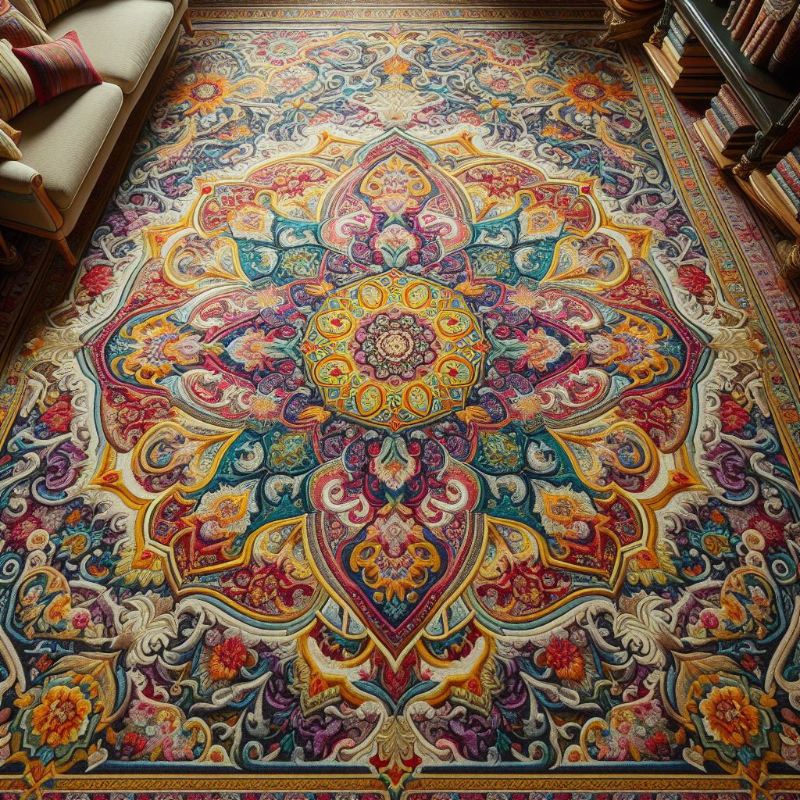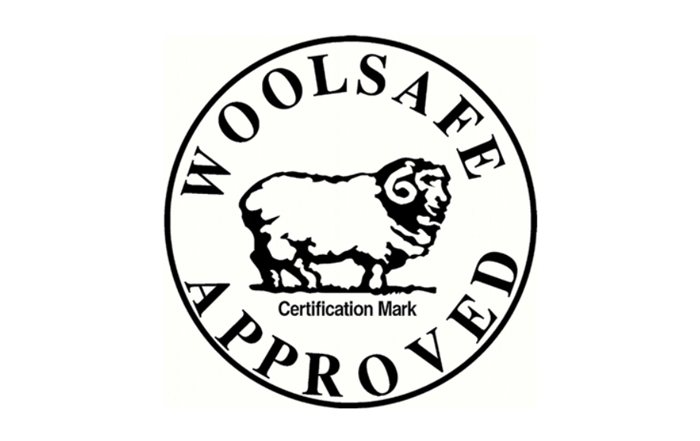
18 Apr A Guide to Correct Cleaning and Maintenance of Your Wool Carpet
Dirt
There are two broad types of dirt. The first is dry, which is typically grit and sand. This type of dirt falls on to the carpet and if not vacuumed cleaned routinely will work its way to the base of the carpet. As the fibres move against each other under foot traffic, the dry grit acts as an abrasive (think sandpaper) damaging the fibres over time.
The second type of dirt is wet, which can be further divided into water-based and oil-based. Water based dirt is dirt dissolved in water or suspended in water, for example coffee or wine is mainly water, rust staining is tiny particles of rust suspended in water. Oil based dirt is food-based oils and greases from cooking, human oils and greases from our skin and hair, or oils and greases brought from outside. It is possible to have a combination of oil in water, for example, rainwater brought in on shoes with be mainly water but will contain oils. In this case, treat it as a water-based dirt, but if the dirt is left for an extended period of time, the water will have evaporated away leaving the oil behind.
Cleaning Chemicals
The choice of cleaning chemicals to use on wool are absolutely essential. Wool, being a natural material is susceptible to irreversible damage by carpet cleaning chemicals intended for other carpet material types, even some ‘homemade’ chemicals can damage wool.
How do you know what chemicals to choose?
Always look for products marked specifically as ‘WoolSafe’, or ‘safe for wool’, or the label carries the ‘Woolsafe Approved’ stamp. Do not use any other product.
Woolsafe carpet cleaning chemicals are pH neutral (pH 7), even slightly acidic (typically around pH 5 to 6), non-caustic chemicals that been tested and certified as safe for wool. Never use high pH or alkaline-based carpet cleaning chemicals as wool is sensitive to chemicals with a pH of 8 or more. Never use ‘oxy-powders’ or any ‘oxy’ non-chlorine bleaches found in fabric whiteners, never use chlorine-based cleaning products include Bleach. All these chemicals will damage wool.

Routine Carpet Maintenance
Consistent and correct vacuuming is the foundation of maintaining a healthy wool carpet. Aim to vacuum your carpet at least once a week, or even more frequently in high-traffic areas. Use a quality vacuum cleaner with strong suction power to lift and remove surface dirt and debris. Regular vacuum cleaning will remove all dry dirt, but make two passes with the vacuum cleaner, with the second pass 90 degrees to the first pass. This will ensure a deep vacuum clean.
In addition to vacuuming, regular spot cleaning for wet dirt is crucial for addressing spills and stains before they have a chance to set in. Act quickly! Blot any spills immediately with a clean, absorbent cloth or paper towels. Never rub, as this can push the stain deeper into the carpet fibres. Instead, gently blot the area, then use a mild, wool-safe carpet cleaner to treat the stain, following the product’s instructions carefully.
Another important point to remember – spray the cloth rather than the stain. Spraying directly on the carpet could drive the stain deeper and wider.
Deep Cleaning Wool Carpets
While routine maintenance is essential, periodic deep cleaning is necessary to remove embedded dirt, restore the carpet’s appearance, and extend its lifespan. It is recommended deep cleaning wool carpets every 12 to 18 months, depending on the level of foot traffic and soiling.
The most effective method for deep cleaning wool carpets is traditional carpet cleaning. This process involves using a professional carpet cleaning machine to spray a warm (never hot as hot water will shrink wool) wool-safe cleaning solution onto the carpet, agitating the fibres, and then extracting the dirt and solution with powerful suction.
Before beginning the deep cleaning process, it’s important to thoroughly vacuum the carpet to remove any loose dirt and debris. Next, identify and pretreat any heavily soiled or stained areas with a carpet pre-spray solution. Allow the pre-spray to dwell for the recommended time, typically 10 minutes, to allow the cleaning agents to penetrate and break down the soil – don’t let the pre-spray solution dry.
When using the carpet cleaning machine, work slowly and methodically, making overlapping passes to ensure complete coverage. Pay special attention to high-traffic areas and heavily soiled spots, making multiple passes to ensure thorough cleaning. Be sure to frequently empty the machine’s dirty water tank to maintain optimal suction power.
After the initial cleaning, it’s essential to perform a final rinse. This can be achieved by using a final rinse carpet cleaning chemical, rather than just plain water. This rinse solution is slightly acidic (citric acid) so it will neutralise any alkaline chemicals (old detergents) and prevent wicking from the base of the carpet. Refill the machine’s tank with clean, warm rinse solution and run it over the carpet again to remove any remaining cleaning solution. This final rinse step is crucial to remove all residues from being left behind in the carpet fibres.
Wool is highly water absorbent, so once the deep cleaning is complete, use a carpet grooming tool to fluff the fibres and facilitate faster drying. Ensure the room is well-ventilated to accelerate the drying process.
Drying the Carpet
Drying the carpet is an important step to reduce the risk of shrinkage and to prevent discolouration from staining drawn to the surface. It is important to dry the carpet as quickly as you can. If the weather is nice outside (warm and dry), open windows to allow a cross draught. Use white cotton towelling, absorbent paper or even baking soda in isolated spots to draw as much moisture as possible as quickly as possible.
In homes with central heating, you can use a combination of warmth and dehumidifiers to increase the rate of evaporation by drying the air.
Wicking and Browning
One of the most common complaints after deep cleaning wool carpets is the emergence of browning or yellowing. There are two mechanisms at play that result in the discolouration of wool carpets, the first and the most common is wicking and the second is cellulosic browning.
Wicking is the mechanism where moisture deep in the carpet (from cleaning) is drawn by capillary action to the surface of the carpet as the carpet dries by evaporation.
Cleaning wets the fibres and that moisture travels down by capillary action towards the carpet base. If all the dirt hasn’t been removed and some dirt is left in the deeper parts of the carpet, the moisture mixes with the trapped dirt and as the carpet dries, the moisture with the dirt is drawn to the surface by capillary action, resulting in browning and yellowing (depending on the amount of dirt drawn).
Cellulosic browning is a brown discolouration that could occur after cleaning and presenting a similar appearance as wicking, but the mechanism is different. For cellulousic browning to occur, the carpet must contain cellulous fibres either in the carpet or backing. Cellulose is the main constituent of plant-based fibers like cotton, jute, hemp, sisal, and rayon.
Cellulosic browning is caused by exposing these fibres (more specifically Lignin, a complex organic polymer) to moisture and leaving to dry slowly. There are chemicals specifically designed to treat this type of browning, which involves treating and rinsing the carpet with a strong acid (pH 2-3).
The solution to both types is two-fold: avoid overwetting the carpets (the more water you put on the carpets the more you have to remove) and dry the carpet as quickly as you can.
Advanced Surface Care Course
Coming soon is our comprehensive course designed to provide professional housekeepers and cleaning staff with the advanced knowledge and techniques needed to effectively care for and maintain a wide variety of high-end surfaces, furniture, and household items found in luxury homes, hotels, and other hi-value environments.
Through a systematic, module-based learning programme, participants will gain a deep understanding of the fundamental principles and best practices for superior care and cleaning of antique and delicate surfaces, including:
- Identifying Surfaces – Mastering the ability to recognise different surface materials and their unique cleaning requirements to avoid costly mistakes.
- Identifying Different Types of Dirt and Soiling – Developing expertise in identifying the nature and origins of various types of dirt, stains, and residues for targeted treatment.
- Care and Cleaning Procedures – Learning a comprehensive range of cleaning methods and techniques, and when to apply them for optimal results.
- Selecting Appropriate Tools and Equipment – Knowing which is the most effective tool and equipment to use for the type of dirt and surface material.
- Selecting Suitable Cleaning Chemicals – Gaining knowledge of cleaning chemicals, understanding the differences and selecting the correct one for the task.
By the end of this course, participants will have the expertise to maintain the appearance of the most sophisticated homes, hotels, and other prestigious environments, delivering exceptional cleaning results while preserving the integrity of valuable surfaces and furnishings.

